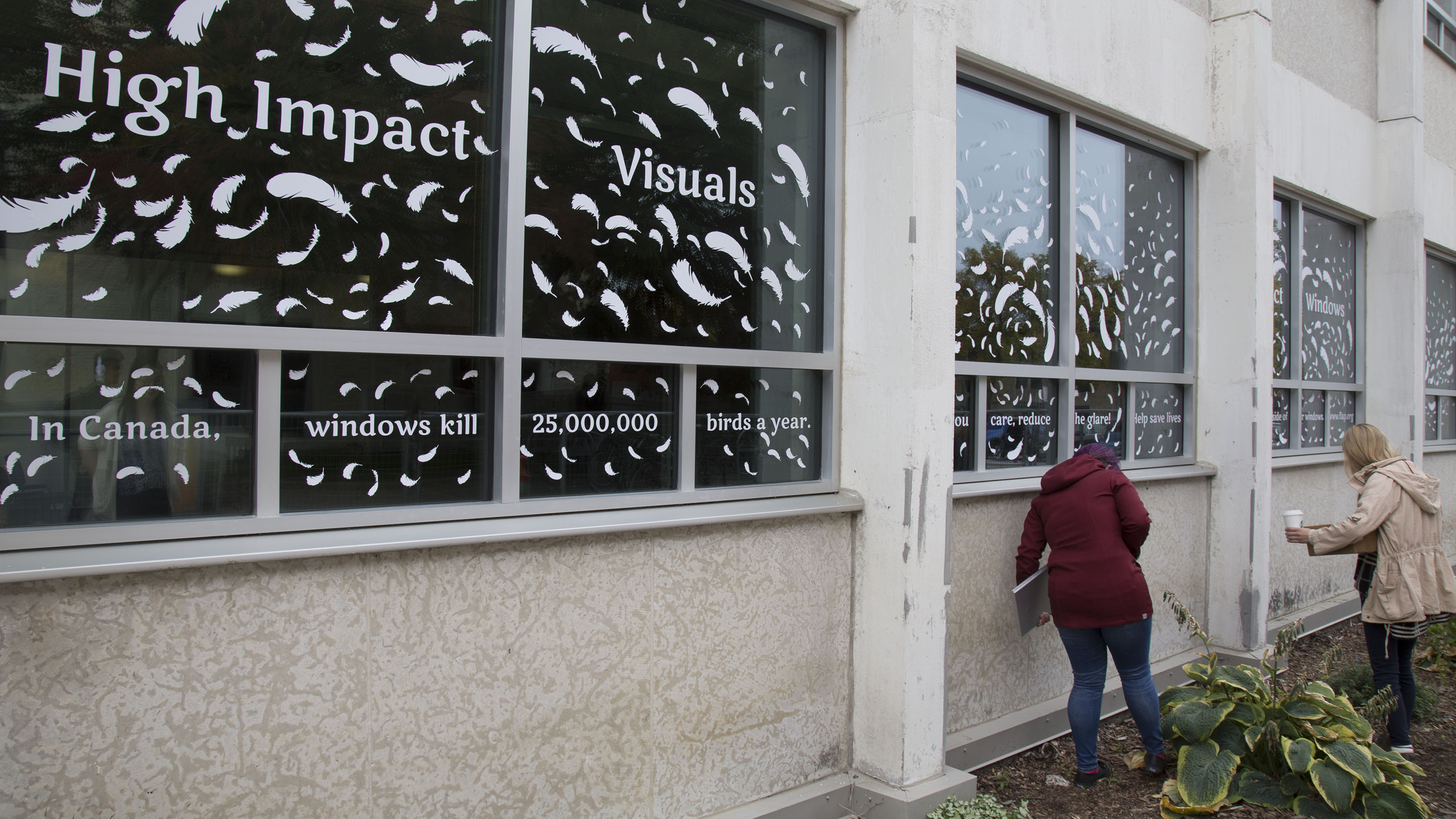Among feather and flower decals on windows on campus, written messages stand bold and clear. One reads: “In Canada, windows kill 25 million birds a year.”
With the fall bird migration underway, a team of students and researchers are calling on the public to join the endeavour to prevent migratory birds from crashing into windows as they journey south.
Last week, the Wallace and Biological Sciences buildings were decorated using white vinyl decals and white chalk markers. The team is using the window decorations to break-up reflections of what the birds could interpret as clear sky or vegetation.
While it was previously believed tall buildings and office towers were the biggest threat to migrating birds because of office lights that remained on overnight, causing disorientation for birds during their nocturnal migration, new research has found that low- and mid-rise buildings and houses were responsible for the bulk of the overall death toll.
Kevin Fraser, assistant professor of biology and co-lead on the project, said this gave his team a specific area to focus their work on.
“The positive is that, well, it’s not just that we have to convince companies that own those office towers turn off their lights at night,” Fraser said.
“If most birds are killed by houses and the low-rise buildings we work in, then we have more power to do something to mitigate that.”
The awareness project is a collaboration between the researchers and student volunteers from the Avian Behaviour and Conservation (ABC) lab, the Natural Resources Institute (NRI), and the U of M Science, Technology, Engineering, Art and Math (STEAM) program.
Nicola Koper, professor at the U of M Natural Resources Institute and the project’s other co-lead, said the goal is to make people aware of how simple it is to help prevent collision-based bird deaths.
“We hope to affect not just bird-window collisions on campus, but hopefully people will become more aware of the issue and learn more about how they can actually do something and realize that it can look really great,” Koper said. “It’s not just some ugly graffiti kind of thing.”
This spring, student volunteers from both the Fraser lab and the Koper lab started to conduct surveys of buildings around campus to determine “collision hot spots.”
“Part of the goal of the survey is to figure out where the hot spots are, so that then when we go to do more permanent treatments in the future, [researchers] can go right to where the windows are that are having the biggest impact,” Fraser said.
Along with the artwork currently adorning “high-impact” windows on campus, the Gallery of Student Art presented photos of dead birds post-collision in the exhibit Coda, called “an exposé of bird window-strike mortality,” which ran until Sept. 21.
This project is simple to recreate on the windows of your own home. Fraser said the best strategy is to have imagery fill most of the window, and have it connected “in a bigger way, so that it looks like the solid object it is.”
“You can use liquid chalk, which is basically a specific kind of marker that you can [use to] draw outside of the windows,” said Koper. “You can also buy vinyl decals commercially, as well, that you can put on your window.”
It is not necessary to purchase decals or even chalk to create the artwork — even simple home products will do.
“You can even just use certain kinds of hard soap that you draw on the outside of the window and then you can wash it off again later when the migration season is over,” said Koper, “because most of the problems are during migration.”

